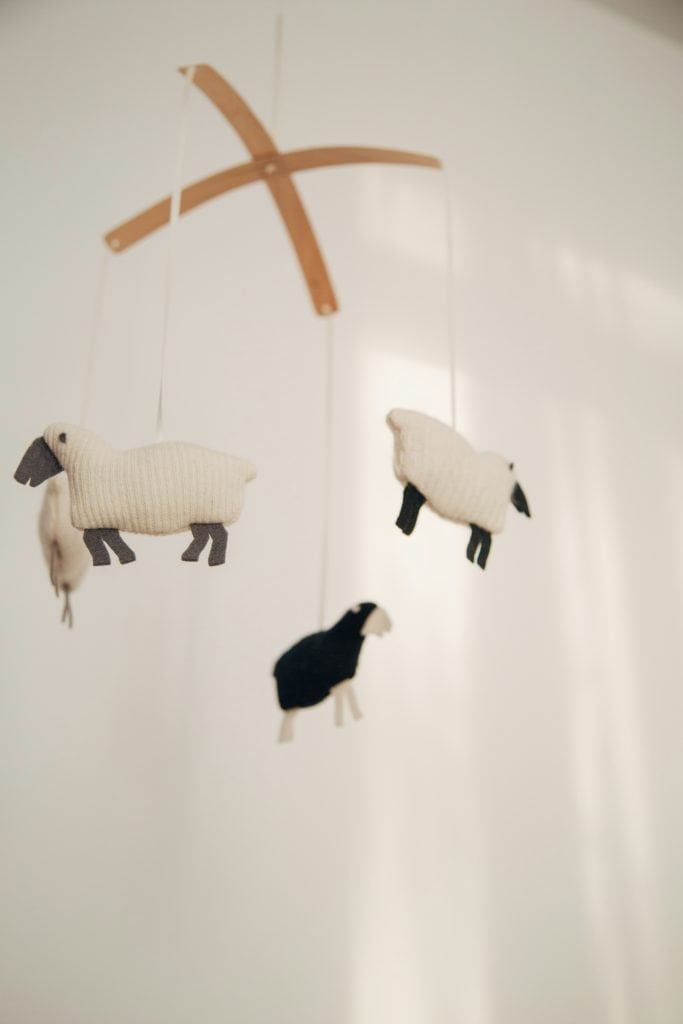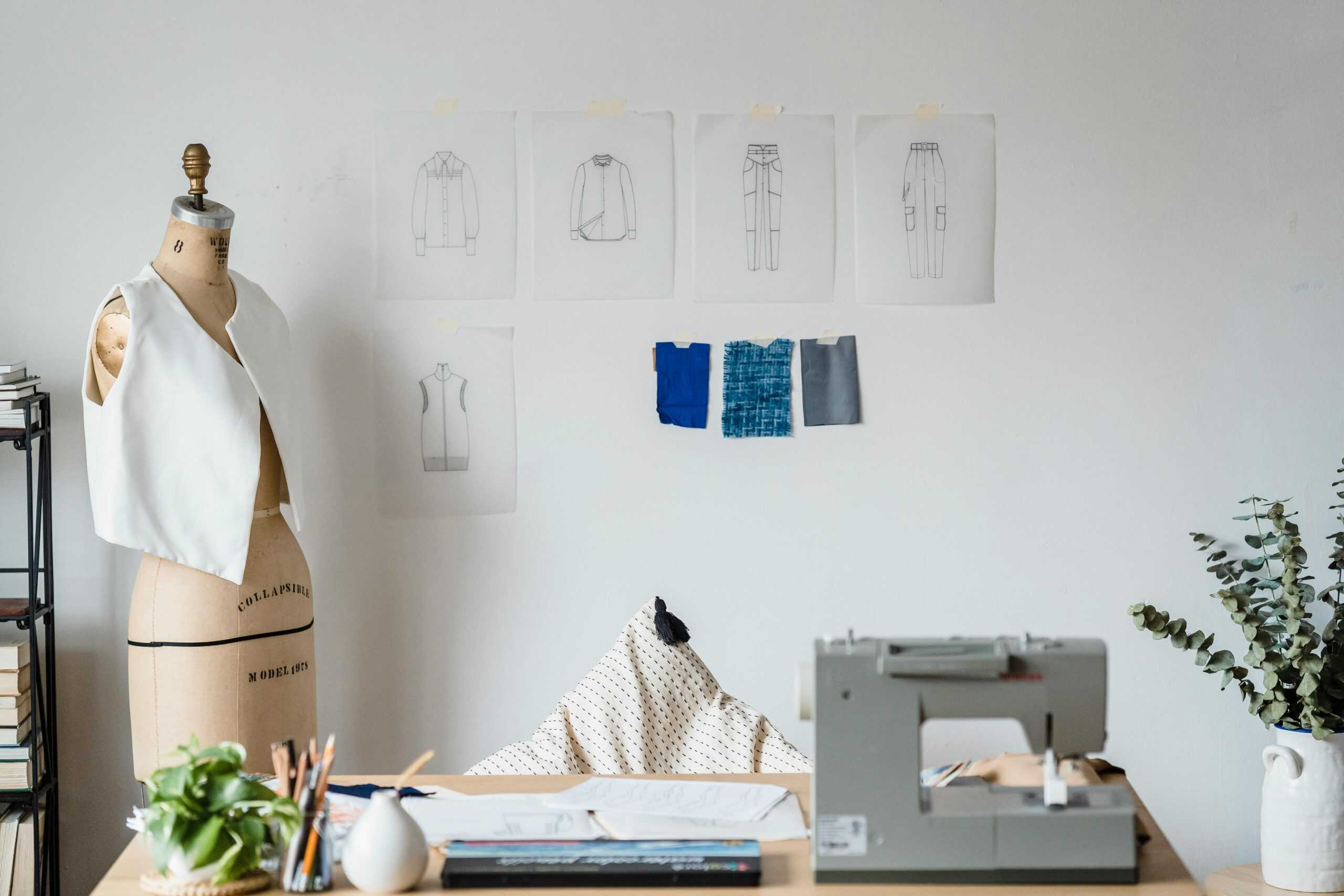There’s a real value in making things yourself. A simple shirt, a cloth napkin, a toy for the kids – handmade items are often sturdier, safer, and more meaningful than store-bought ones. And when you choose natural materials, they’re better for your family and the environment too.
My goal is to handmake my family’s wardrobe, sticking mostly to cotton,wool, linen, and hemp. Natural fibers are just easier to work with, and they hold up to real life – muddy play, repeated washing, and all.
If you’re curious about how to get started with sustainable sewing or handmade living, this guide will help you jump in (without getting overwhelmed). Just the essentials, and a little encouragement too.
Why Making It Yourself Is Totally Worth It (Even If It’s a Little Crooked)

Handmade items bring something to the home that store-bought things just can’t match.
When you sew your own things – especially from natural stuff like cotton, linen, or wool – you’re skipping the plastic fluff and throwaway habits that just don’t hold up. A cloth napkin you made yourself gets tossed in the wash, not the trash. A felt bunny doesn’t leave behind a trail of microplastics. These are quiet wins that add up over time.
If you’re new to sewing, felt toys are honestly one of the best places to begin. They’re simple, forgiving, and kid-approved. Or start with things you’ll actually use: a few cloth wipes, a sturdy apron, a produce bag for the farmers market.
Making things by hand gives your days a different pace. You pause. You focus. You use your hands for something other than scrolling. And your kids see that real, useful things don’t have to come from a store. They can come from you.
That’s powerful. And it’s 100 percent worth it.
What You Need to Begin
A few basic tools and a handful of natural fabrics will take you far.
Basic Tools
Start with the basics. These are the tools most beginners use again and again:
- Good fabric scissors – Invest in a pair that cuts cleanly and only use them on fabric.
- Measuring tape – For clothing and household projects, accurate measuring makes a big difference.
- Sewing needles – Hand-sewing needles work fine for small projects, but a basic sewing machine will make things easier.
- Pins or clips – These help hold things in place while you sew.
- Seam ripper – Mistakes happen. This tool helps undo stitches neatly.
Optional but helpful:
- Iron and ironing board – Pressing your fabric before and during sewing makes things look more finished.
- Cutting mat and rotary cutter – Great for straight lines, especially when making napkins, wipes, or gift wrap.
Natural Fabrics to Use
The materials you choose matter, both for sustainability and comfort:
- Organic cotton – Soft, washable, and ideal for kids’ clothes and toys.
- Linen – Strong and breathable. Perfect for clothing, napkins, and kitchen goods.
- Wool felt – Choose 100% wool or wool-blend felt instead of acrylic. It’s safer for kids, biodegradable, and easy to work with.
- Hemp or bamboo blends – Earth-friendly and durable. These are great for everyday household items.
Avoid synthetic fabrics like polyester or acrylic when you can. Natural fibers are better for your skin, better for the planet, and often easier to sew.
Patterns or No Patterns?
For simple items like cloth napkins, bibs, or felt animals, you don’t need a formal pattern. A ruler and a bit of tracing paper are enough. But if you want to try sewing clothes, look for beginner-friendly patterns made for woven fabrics (no stretch needed).
Beginner-Friendly Projects

When you’re just getting started, it helps to keep things simple and useful. These beginner-friendly projects are a good way to practice sewing skills while creating something meaningful for your home and family.
Clothing Projects
These are simple items that don’t require advanced skills or stretch fabrics:
- Elastic-waist skirts or pants – No zippers or buttons needed. Perfect for kids or cozy loungewear.
- Aprons – Great for everyday use in the kitchen or garden. Easy to size and customize.
- Linen tops or tunics – Loose-fitting garments made from breathable fabrics are forgiving and comfortable.
- Simple baby bloomers or bonnets – Small projects that use very little fabric and make thoughtful handmade gifts.
Tip: Start with woven fabrics like cotton or linen – they’re easier to handle than stretchy knits.
Felt Toys & Kids’ Items

Wool felt is a wonderful material for beginners – easy to cut, doesn’t fray, and sews up quickly:
- Felt animals or dolls – Cut simple shapes, add a few stitches and some stuffing, and you’ve got a toy that will actually get played with.
- Soft blocks or stacking toys – Made from fabric scraps and safe for babies and toddlers.
- Play food – Think felt strawberries, eggs, or little slices of bread – great for pretend kitchens.
- Simple capes or play crowns – Dress-up items that encourage imaginative play.
These projects can often be hand-sewn while watching a movie or sitting at the kitchen table.
Useful Home Goods

Everyday items that are both practical and beautiful:
- Cloth napkins – Straight seams and no frills. A great place to practice.
- Reusable kitchen towels or unpaper towels – Helps reduce waste and adds a handmade touch to your routine.
- Fabric gift wrap (furoshiki style) – Reusable and lovely for holidays or birthdays.
- Potholders or coasters – Quick projects that use up scrap fabric and make nice gifts.
- Lavender sachets – Stitch up small squares and fill with dried lavender to tuck into drawers or give as calming gifts.
Most of these can be made with leftover fabric or repurposed materials, like an old linen shirt or cotton sheet.
These projects aren’t just “crafts” – they’re useful, family-centered, and sustainable. Each piece you make replaces something disposable, synthetic, or store-bought. And each one adds a bit more beauty and purpose to your home.
Need more inspiration? Check out these 42 sewing projects you will love for even more practical and creative ideas.
Tips for Sewing Sustainably
Sewing your own clothes, toys, and home goods is already a step toward sustainability. You’re making something with your own two hands instead of buying something wrapped in plastic. That’s a great start.
But if you want to take it one step further, here are a few cheerful, low-stress ways to sew a little greener (without making it complicated or expensive).
1. Choose Natural Fibers When Possible
Stick with fabrics made from cotton, linen, wool, or hemp. They’re comfy, breathable, and they don’t leave behind a trail of microplastics. If you’ve ever worked with wool felt, you know how sturdy and satisfying it is. And when it’s finally worn out, it breaks down naturally. Win-win.
2. Use What’s Already On Hand
That old linen dress, worn-out pillowcase, or soft flannel shirt still holds value. Repurposed fabrics carry a little history with them and often sew better than stiff new yardage. Shopping your own stash (or closet) can spark creativity and save money in the process.
3. Save Your Scraps
Even the tiniest leftovers can turn into something useful. Scraps make excellent doll clothes, quilt squares, fabric ribbons, or patch kits. A simple jar or box near your sewing table can collect odds and ends until they’re ready for their next life.
4. Mend What You Can
Repairing a rip or replacing a button keeps beloved clothes in rotation and teaches a deeper kind of respect for what we already own. Even a quick patch or a bit of visible mending adds charm and tells the story of something well-loved and well-used.
5. Keep Projects Simple
A square cloth napkin, a basic drawstring bag, or a straightforward felt animal can be every bit as useful as more elaborate makes. Simple projects tend to get finished, used, and appreciated. Complexity isn’t the goal – function, beauty, and enjoyment are.
6. Prioritize Quality Over Quantity
One beautifully made apron or a handful of durable cloth wipes can outlast a whole pile of rushed projects. Taking your time with materials you love helps create things that serve your family well – and that you’ll feel proud to use again and again.
Where to Find Patterns or Tutorials
There are plenty of places to learn the basics and pick up patterns for clothes, toys, and home items.
Free Patterns Online
Many sewing blogs and handmade living websites offer free patterns and tutorials. Look for projects labeled “beginner-friendly” or “easy sew.” These usually have step-by-step photos and plain language instructions.
Some good search terms to try:
- simple linen top pattern free
- felt animal sewing pattern beginner
- DIY cloth napkins tutorial
Tip: Be mindful of the materials used in tutorials. If they call for fleece or polyester felt, just swap in a natural alternative like cotton or wool.
Printable Patterns
Websites like Etsy or independent pattern designers often offer printable PDFs you can buy and download at home. These are great if you want to make clothing with a bit more shape or detail.
Look for:
- Patterns made for woven fabrics (no stretch)
- Options that include clear sizing charts
- Designs that use minimal notions (no zippers or buttonholes to start)
Books and Library Resources
Your local library might carry beginner sewing books that include full-size patterns. Look for titles focused on slow fashion, sustainable sewing, or sewing for the home. These books tend to include practical projects that match the tone and values of a handmade lifestyle.
Video Tutorials
If you’re a visual learner, YouTube can be a great help. Try searching for:
- sew a toddler skirt with elastic waistband
- how to sew felt food by hand
- DIY fabric gift wrap tutorial
Start with short, simple videos and build confidence as you go.
Whether you prefer following a paper pattern, watching a video, or just tracing a shape onto fabric, the key is to start with something small and manageable. The more you sew, the more you’ll find your own rhythm.
A Homemade Life Begins Here
A few quiet minutes, a scrap of fabric, the willingness to try. That’s all you need to begin shaping a home that feels like yours – thoughtful, imperfect, full of heart.
Sewing simple things by hand isn’t just about the finished item. It’s about slowing down, using what you have, and finding joy in the doing. It’s about making a space that feels warm and lived-in, where your kids know what handmade love feels like.
This is where it starts. One handmade toy. One soft napkin. One try that turns into practice.
You’re not just making things. You’re making home.

